Operating Procedure of Tungsten Heater for Aluminum Plating Machine - Power Control
- Details
- Category: Tungsten Information
- Published on Thursday, 30 June 2016 11:39
- Written by xuejiao
- Hits: 243
Tungsten heater is used as a heating element in aluminum plating machine for aluminum film. Aluminum machine operation begins with the power supply.
Firstly, open power supply, turn on each cycle valve, cooling vacuum system, and open the maintain pump to pre-vacuum pumping for diffusion pump for 30 minutes, heated diffusion pump about 1 hour and vacuum aluminizing.
Cleaning up the operation vehicle, and then placing tungsten heater, molybdenum wire magnesium fluoride, two tin board, and put aluminum workpieces. Put the operation vehicle into the room, close the door, and open mechanical pump. 5-7 seconds later, open the pre-pumping valve F2, open composite vacuum gauges, there are two screens of high and low vacuum, on the vacuum gauge. When the low vacuum gauge displays 4.0E-0, close pre-pumping valve F2, pre-opening valve F3, and open the high vacuum valve F1. When the high vacuum valve shows 4.0E-2, open the work vehicle, and adjust the voltage in the 50V-70V. After the rotation is normal, open FK3 valve flow indicator, turn off a high vacuum flapper valve, and control high vacuum table. When it shows 4.0E-0, open bombardment power and adjust voltage between 800V-1200V to clean ion for 5 minutes. Turn off the bombardment power and rotated power, FK3 valve. Close flow indicator, open high vacuum baffle valve for creation of vacuum. After high vacuum table shows 2.0E-2, it is time to vacuum aluminizing.
If the time for vacuum aluminizing stay for too long, it would cause that the tungsten wire would direct baked aluminum layer of tungsten surface, and then it would be oxidation and become yellow. The quality of aluminum film also influenced by the quality of vacuum, the stable process parameters, subsidiary materials for aluminizing, the storage time of aluminizing workpiece. If the cleaning of coated article is not complete, its surface would have residual cleaning agents and water.

| Tungsten Metals Supplier: Chinatungsten Online www.tungsten.com.cn | Tel.: 86 592 5129696; Fax: 86 592 5129797;Email:sales@chinatungsten.com |
| Tungsten News & Prices, 3G Version: http://3g.chinatungsten.com | Molybdenum News & Molybdenum Price: http://news.molybdenum.com.cn |
Tungsten Alloy Radiation Protection Window
- Details
- Category: Tungsten Information
- Published on Wednesday, 29 June 2016 19:02
- Written by minghui
- Hits: 242
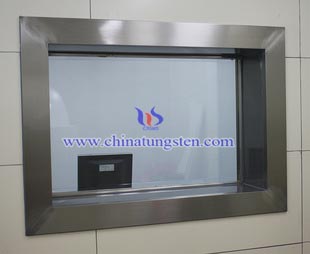 With the development of science and technology, radiation technology has been widely used in biological research, medicine, industry and agriculture. In physics, radiation is the emission or transmission of energy in the form of waves or particles through space or through a material medium. It can be divided into ionizing radiation and non-ionizing radiation depending on its energy level and its ability to ionize substances. The word “radiation” generally refers to ionizing radiation. Ionizing radiation are mainly α, β and γ radiation three kinds. Beta-ray is a stream of electrons which moves at high-speed and has strong penetrating power; alpha particles consist of two protons and two neutrons bound together into a particle identical to a helium nucleus; γ-ray, also known as the stream of γ particles, is released by nuclear energy level transition, and its wavelength is shorter than 0.01 Å. γ-ray can be used in the industry for industrial flaw detection or automatic control of the pipeline.
With the development of science and technology, radiation technology has been widely used in biological research, medicine, industry and agriculture. In physics, radiation is the emission or transmission of energy in the form of waves or particles through space or through a material medium. It can be divided into ionizing radiation and non-ionizing radiation depending on its energy level and its ability to ionize substances. The word “radiation” generally refers to ionizing radiation. Ionizing radiation are mainly α, β and γ radiation three kinds. Beta-ray is a stream of electrons which moves at high-speed and has strong penetrating power; alpha particles consist of two protons and two neutrons bound together into a particle identical to a helium nucleus; γ-ray, also known as the stream of γ particles, is released by nuclear energy level transition, and its wavelength is shorter than 0.01 Å. γ-ray can be used in the industry for industrial flaw detection or automatic control of the pipeline.
Although radiation brings a lot of convenience to people's lives, but its hazards also need to be valued. Such as γ-ray has a strong penetration power. When the body is exposed to γ rays, γ-rays can enter into the interior of the human body and interact with the cells in vivo, to corrode the complex organic molecules (such as proteins, nucleic acids and enzymes), and thus interfere with the normal chemical processes in the human body, and even cause cell death. In addition, ionizing radiation can alter the chemical balance of the cell (sometimes cause cancer) and damage the genetic material in the cells in the body, leading to fetal malformation and congenital leukemia. So the installation of tungsten alloy radiation protection window in radioactive laboratories and other places which can release radiation is necessary.
Tungsten alloy radiation protection window is made up of tungsten heavy alloy with high-density. According to the research, the radiation shielding properties of a metal material increases with its density. Compared with other traditional materials (such as lead), tungsten alloy has higher density, thus it has greater radiation shielding performance to avoid radiation damage.
| Tungsten Alloy Supplier: Chinatungsten Online www.tungsten-alloy.com | Tel.: 86 592 5129696; Fax: 86 592 5129797;Email:sales@chinatungsten.com |
| Tungsten News & Prices, 3G Version: http://3g.chinatungsten.com | Molybdenum News & Molybdenum Price: http://news.molybdenum.com.cn |
LED Tungsten Copper Heat Base and Other Materials Comparison
- Details
- Category: Tungsten Information
- Published on Wednesday, 29 June 2016 14:28
- Written by xiaobin
- Hits: 248
Most of LED products, usually you need more than one LED assembled on a circuit board. The circuit board not only needs to carry LED module structure, but also plays an important role in heat dissipation. LED heat dissipation board consists of two major components, one is the system board, and the other is LED grain substrate. Most of the system board is made of metal, which takes advantages of excellent heat dissipation characteristics of its own to achieve the effect. However, with the increasing brightness and efficacy requirements of LED, the bottleneck will appear on the LED grain substrate. In order to break the bottleneck of heat dissipation, researchers around the world look for and develop the substrate materials with high thermal coefficient. Currently, several common LED heat dissipation substrates comprises rigid printed circuit boards, high thermal conductivity aluminum plate, a ceramic substrate, soft printed circuit boards, metal composite materials.
Tungsten copper board for heat dissipation is currently recognized as the most performance fit a class of materials. It has many advantages, such as high strength, low coefficient of thermal expansion, high heat transfer coefficient and so on. By adjusting the component can make up a single hot metal chips and LED mismatch insufficient, so it has been widely used in some large scale integrated circuits, high-power devices, as the radiating element. In addition, electrolytic polishing tungsten copper foil surface finishing can effectively improve the heat dissipation of tungsten copper LED substrate surface flatness to meet the stringent requirements for heat dissipation board of flatness. Thick film ceramic substrate fabricated by screen printing technology and with a spatula printed material on the substrate, after drying, sintering, laser and other processes. But with the decreasing size and lines of LED, higher requirements for precision, the accuracy of such board has been unable to reach. Low-temperature co-sintered multi-layer ceramic substrate printed on the board by screen printing and then integrating the multilayer ceramic substrate, and finally through the low-temperature sintering. But it is supposed to consider the shrinkage ratio after multi-layer ceramic sintering, which is difficult to be controlled.
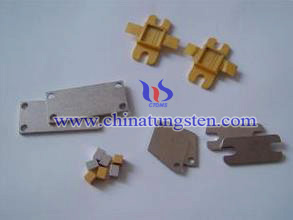
| Tungsten Copper Supplier: Chinatungsten Online tungsten-copper.com | Tel.: 86 592 5129696; Fax: 86 592 5129797;Email:sales@chinatungsten.com |
| Tungsten News & Prices, 3G Version: http://3g.chinatungsten.com | Molybdenum News & Molybdenum Price: http://news.molybdenum.com.cn |
High Density Composite Material Containing Tungsten Powder
- Details
- Category: Tungsten Information
- Published on Wednesday, 29 June 2016 17:44
- Written by xinyi
- Hits: 497
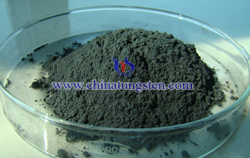
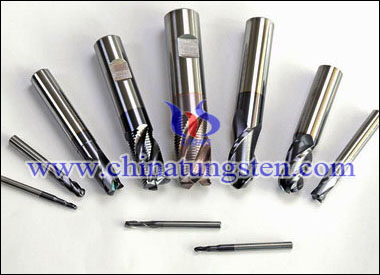
| Tungsten Powder Supplier: Chinatungsten Online tungsten-powder.com | Tel.: 86 592 5129696; Fax: 86 592 5129797;Email:sales@chinatungsten.com |
| Tungsten News & Prices, 3G Version: http://3g.chinatungsten.com | Molybdenum News & Molybdenum Price: http://news.molybdenum.com.cn |
LED Tungsten Copper Heat Base
- Details
- Category: Tungsten Information
- Published on Wednesday, 29 June 2016 14:26
- Written by xiaobin
- Hits: 237
With the world's attention of environmental awareness, energy saving has been an irresistible trend of the moment. The LED industry is one of the fastest growing industries; LED products not only have a great advantage in terms of energy saving, but also have high efficiency, fast response time, long life cycle and do not contain toxic substances, which is outstanding in similar products. In general, the input power of LED high power products has about 15% of electrical energy into light energy, and another 85% of the electrical energy is dissipated into heat. So if the LED light emitting heat generated not been able to export, it will make the temperature of the LED screen is too high, thus affecting its luminous efficiency, stability and product life cycle. In order to improve the luminous efficiency, thermal dispersion management and design LED system become an important research topic.
The ways of heat dissipation mainly includes: air heat dissipation, heat the substrate to export, export gold wire cooling, through-hole heat dissipation and so on. Here we introduce the substrate cooling. In LED products typically requires multiple LED assembled on a circuit board. In addition to the circuit board is responsible for carrying LED module structure, on the other hand it also needs to play the role in heat dissipation. LED heat dissipation substrate mainly takes advantages of the excellent heat conductivity of its thermal substrate material to derived from the LED grain. Thus according to the ways of LED heat dissipation, can be divided into two types, LED grain board and the system circuit board. These two are multiplied by different heat dissipation board carrying the LED chip LED grain and the LED grain emits light generated by the circuit board to the system, and then absorbed by the atmosphere via the heat dissipating board LED die, to achieve the dissipation of the heat effect. Tungsten copper material has high strength, low coefficient of thermal expansion, excellent plasticity and thermal and electrical conductivity, which is the perfect choice for LED board. Compared with single metal, such as Al substance, it can avoid the thermal mismatch and have better stability and heat dissipation.
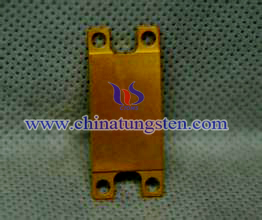
| Tungsten Copper Supplier: Chinatungsten Online tungsten-copper.com | Tel.: 86 592 5129696; Fax: 86 592 5129797;Email:sales@chinatungsten.com |
| Tungsten News & Prices, 3G Version: http://3g.chinatungsten.com | Molybdenum News & Molybdenum Price: http://news.molybdenum.com.cn |





 sales@chinatungsten.com
sales@chinatungsten.com